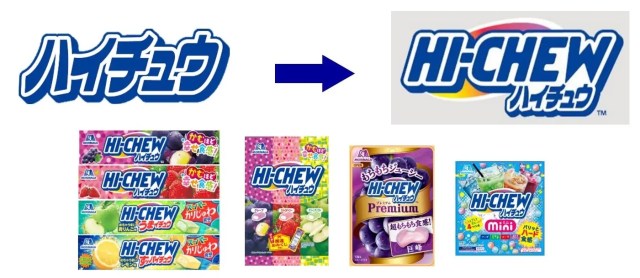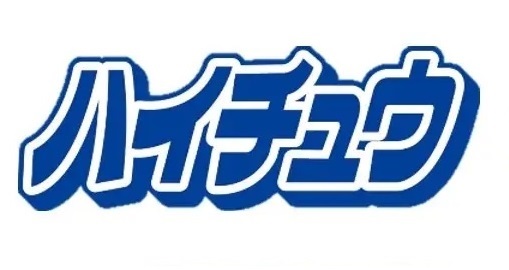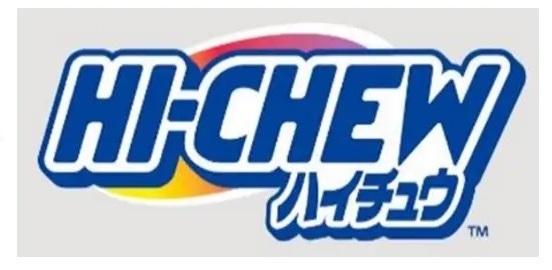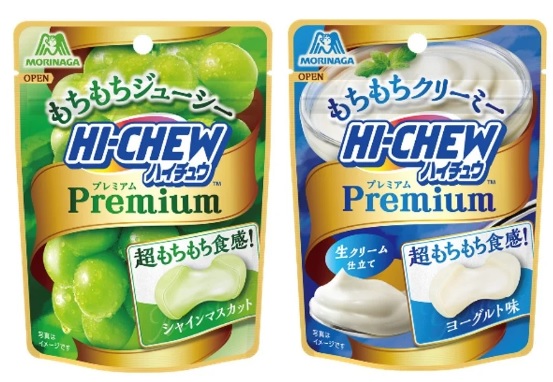
America’s second-most popular Hi-Chew flavor will also make its in-Japan debut.
Has there ever been a bigger Japanese-sweets-overseas success story than Hi-Chew? Sure, Japanese dessert flavors, like matcha and sakura, have made inroads in other countries, as have certain sweet snack types like ice daifuku (often called “mochi ice cream”). As an individual product from a specific brand, though, few can rival Morinaga’s Hi-Chew fruit chew candies in English-language territories, where even Glico’s Pocky can’t match its popularity and enthusiastic acceptance by the mainstream public.
Hi-Chew wasn’t an overnight overseas success story, though. It first went on sale in Japan back in 1975, but it wasn’t until about 10 years ago that it really caught on in the U.S., thanks in no small part to word of mouth from Boston Red Sox teammates of Japanese pitcher Junichi Tazawa. Free samples at the stadium then turned baseball fans into Hi-Chew fans too, prompting Morinaga to open a Hi-Chew factory in the U.S. to keep retailers including Target, Walmart, and a slew of other retailers outside the Asian food specialty market sphere stocked too.
So now, to reflect Hi-Chew’s evolution to an international snack staple, Morinaga has redesigned the logo it uses for the candy in Japan, and not only have they added English to it, the English text is much more prominent than the Japanese.
▼ Old Hi-Chew logo in Japan
▼ New Hi-Chew logo in Japan
The new logo still features the Hi-Chew name written in Japanese phonetic katakana characters (ハイチュウ), but hanging off to bottom right of the logo, underneath the HI-CHEW part. “We are taking this opportunity to redesign our brand logo from katakana to an English rendering of Hi-Chew as we aim to be a global brand loved by many people,” says Morinaga in its announcement.
Morinaga has also said that it will be bringing mango Hi-Chew, the second-most popular flavor in America (behind strawberry) to Japan for the first time, with the packaging even touting it as “A popular flavor in America!” (アメリカで人気のフレーバー!),
▼ Maybe we should pick up 1,400 of them and make another mega Hi-Chew like we previously did in the SoraKitchen.
It’s not unusual for Japanese businesses to design logos that use English script instead of Japanese. Nintendo, Toyota, and Sony are just three examples of prestigious companies that use an English-text logo for their organizations even within Japan. For that matter, Morinaga itself uses English text for its company logo, which features an angel with M-shaped wings.
In particular, Japanese companies with international aspirations regularly use English logos companywide, with Japanese-text-only logos more commonly associated with entities with a more provincial scope, or heavily focused on products with deep ties to classical Japanese culture.
As such, the logo redesign isn’t likely to be seen within Japan as Hi-Chew sweeping its originated-in-Japan status under the rug, but as a sign that the candy has achieved success and recognition overseas beyond that of a short-lived fad or novelty.
Source, images: PR Times
● Want to hear about SoraNews24’s latest articles as soon as they’re published? Follow us on Facebook and Twitter!
Follow Casey on Twitter, where he continues to have faith that one day Morinaga will bring back its orange-flavor Ice Box.





 Hi-Chew releases new Japanese School Lunch flavor to stimulate appetites and nostalgia
Hi-Chew releases new Japanese School Lunch flavor to stimulate appetites and nostalgia What does this Japanese candy have to do with the Red Sox? Quite a lot, actually
What does this Japanese candy have to do with the Red Sox? Quite a lot, actually Drinkable Hi-Chew coming to a Japanese convenience store near you!
Drinkable Hi-Chew coming to a Japanese convenience store near you! Hi-Chew fruit candies re-invented in DIY food creations
Hi-Chew fruit candies re-invented in DIY food creations RocketKitchen makes a giant Hi-Chew candy from over 1,400 Hi-Chew pieces!
RocketKitchen makes a giant Hi-Chew candy from over 1,400 Hi-Chew pieces! Japan’s new difficult-to-drink-from beer glass protects your liver, but it’s a brutal experience
Japan’s new difficult-to-drink-from beer glass protects your liver, but it’s a brutal experience How to order snacks on a Shinkansen bullet train in Japan
How to order snacks on a Shinkansen bullet train in Japan Demon Slayer: Kimetsu no Yaiba gets new roller coaster attractions and food at Universal Studios Japan
Demon Slayer: Kimetsu no Yaiba gets new roller coaster attractions and food at Universal Studios Japan New Pokémon ice cream, dessert drinks, and cool merch coming to Baskin-Robbins Japan【Pics】
New Pokémon ice cream, dessert drinks, and cool merch coming to Baskin-Robbins Japan【Pics】 Burger King Japan suddenly adds Dr. Pepper and Dr. Pepper floats to its menu nationwide
Burger King Japan suddenly adds Dr. Pepper and Dr. Pepper floats to its menu nationwide Hello, cosmetics! Clinique teams up with Hello Kitty this summer for first-time collaboration
Hello, cosmetics! Clinique teams up with Hello Kitty this summer for first-time collaboration “The most Delicious Cup Noodle in history” – Japan’s French Cup Noodle wins our heart【Taste test】
“The most Delicious Cup Noodle in history” – Japan’s French Cup Noodle wins our heart【Taste test】 To combat declining birth rate, Japan to begin offering “Breeding Visas” to foreigners
To combat declining birth rate, Japan to begin offering “Breeding Visas” to foreigners Starbucks teams up with Japanese shochu brewery for a whole new coffee experience
Starbucks teams up with Japanese shochu brewery for a whole new coffee experience Studio Ghibli releases giant Totoro plushies in Japan
Studio Ghibli releases giant Totoro plushies in Japan Nintendo history you can feel – Super NES, N64, and GameCube controllers become capsule toys
Nintendo history you can feel – Super NES, N64, and GameCube controllers become capsule toys Starbucks releases a cute Frappuccino and Unicorn Cake…but not in Japan
Starbucks releases a cute Frappuccino and Unicorn Cake…but not in Japan Kyoto Tower mascot termination reveals dark side behind cute Japanese characters
Kyoto Tower mascot termination reveals dark side behind cute Japanese characters McDonald’s Japan’s Soft Twist Tower: A phantom ice cream only sold at select branches
McDonald’s Japan’s Soft Twist Tower: A phantom ice cream only sold at select branches Yabai Ramen: What makes this Japanese ramen so dangerous?
Yabai Ramen: What makes this Japanese ramen so dangerous? Finally! Nintendo Japan expands Switch 8-bit controller sales to everybody, Online member or not
Finally! Nintendo Japan expands Switch 8-bit controller sales to everybody, Online member or not Japanese government wants to build luxury resorts in all national parks for foreign tourists
Japanese government wants to build luxury resorts in all national parks for foreign tourists 10 things you should buy at 7-Eleven in Japan
10 things you should buy at 7-Eleven in Japan Studio Ghibli releases anime heroine cosplay dresses that are super comfy to wear
Studio Ghibli releases anime heroine cosplay dresses that are super comfy to wear Woman charged for driving suitcase without a license in Osaka
Woman charged for driving suitcase without a license in Osaka Studio Ghibli unveils My Neighbour Totoro miniature house model
Studio Ghibli unveils My Neighbour Totoro miniature house model Kyoto experiencing problems with foreign tourists not paying for bus fares, but not on purpose
Kyoto experiencing problems with foreign tourists not paying for bus fares, but not on purpose Fighting mild hunger with a Japanese soda that turns into jelly in the stomach【Taste test】
Fighting mild hunger with a Japanese soda that turns into jelly in the stomach【Taste test】 Studio Ghibli’s Howl’s Moving Castle tapestry unveiled in Japan for first time
Studio Ghibli’s Howl’s Moving Castle tapestry unveiled in Japan for first time McDonald’s new Happy Meals offer up cute and practical Sanrio lifestyle goods
McDonald’s new Happy Meals offer up cute and practical Sanrio lifestyle goods Sales of Japan’s most convenient train ticket/shopping payment cards suspended indefinitely
Sales of Japan’s most convenient train ticket/shopping payment cards suspended indefinitely Sold-out Studio Ghibli desktop humidifiers are back so Totoro can help you through the dry season
Sold-out Studio Ghibli desktop humidifiers are back so Totoro can help you through the dry season Japanese government to make first change to romanization spelling rules since the 1950s
Japanese government to make first change to romanization spelling rules since the 1950s Foreigner’s request for help in Tokyo makes us sad for the state of society
Foreigner’s request for help in Tokyo makes us sad for the state of society Ghibli founders Toshio Suzuki and Hayao Miyazaki contribute to Japanese whisky Totoro label design
Ghibli founders Toshio Suzuki and Hayao Miyazaki contribute to Japanese whisky Totoro label design Doraemon found buried at sea as scene from 1993 anime becomes real life【Photos】
Doraemon found buried at sea as scene from 1993 anime becomes real life【Photos】 Tokyo’s most famous Starbucks is closed
Tokyo’s most famous Starbucks is closed Princesses, fruits, and blacksmiths: Study reveals the 30 most unusual family names in Japan
Princesses, fruits, and blacksmiths: Study reveals the 30 most unusual family names in Japan New McFlurry from McDonald’s Japan offers swirls of caramel to make you dizzy with sweetness
New McFlurry from McDonald’s Japan offers swirls of caramel to make you dizzy with sweetness Future Alert: In 2015 you’ll be able to use your smartphone to brush your teeth, kind of
Future Alert: In 2015 you’ll be able to use your smartphone to brush your teeth, kind of Japanese survey reveals the top 10 most popular ice creams in Japan
Japanese survey reveals the top 10 most popular ice creams in Japan McDonald’s Japan to sell caramel shakes in partnership with centuries-old confectionary brand
McDonald’s Japan to sell caramel shakes in partnership with centuries-old confectionary brand Our Japanese reporter visits Costco in the U.S., finds super American and very Japanese things
Our Japanese reporter visits Costco in the U.S., finds super American and very Japanese things Lipton releases Pancake Tea Latte in Japan
Lipton releases Pancake Tea Latte in Japan Real Buddhist monk shows off hot (and sweet) EDM dance moves in Mount Koya video
Real Buddhist monk shows off hot (and sweet) EDM dance moves in Mount Koya video McDonald’s captures the sweet flavour of Japan with new Ramune milkshake
McDonald’s captures the sweet flavour of Japan with new Ramune milkshake Love banana bread? Love ice cream? You can have both with this Banana Bread Ice Cream Sandwich!
Love banana bread? Love ice cream? You can have both with this Banana Bread Ice Cream Sandwich! “Drinkable soft serve ice cream” in bottles to go on sale in Japan
“Drinkable soft serve ice cream” in bottles to go on sale in Japan Hey! You Can Drink Sweet Potatoes, says Japanese beverage maker with new drink
Hey! You Can Drink Sweet Potatoes, says Japanese beverage maker with new drink Popcorn and lemon tea? The unlikely combo is here for a limited time, so of course we had to try!
Popcorn and lemon tea? The unlikely combo is here for a limited time, so of course we had to try! Here are Japan’s favorite ice creams from last month! Vanilla wins by a mile…
Here are Japan’s favorite ice creams from last month! Vanilla wins by a mile… Lightly-salted, potato-cracker-flavored ice cream now on sale nationwide
Lightly-salted, potato-cracker-flavored ice cream now on sale nationwide Ultraman title logo generator set up online by McDonald’s Japan
Ultraman title logo generator set up online by McDonald’s Japan
Leave a Reply